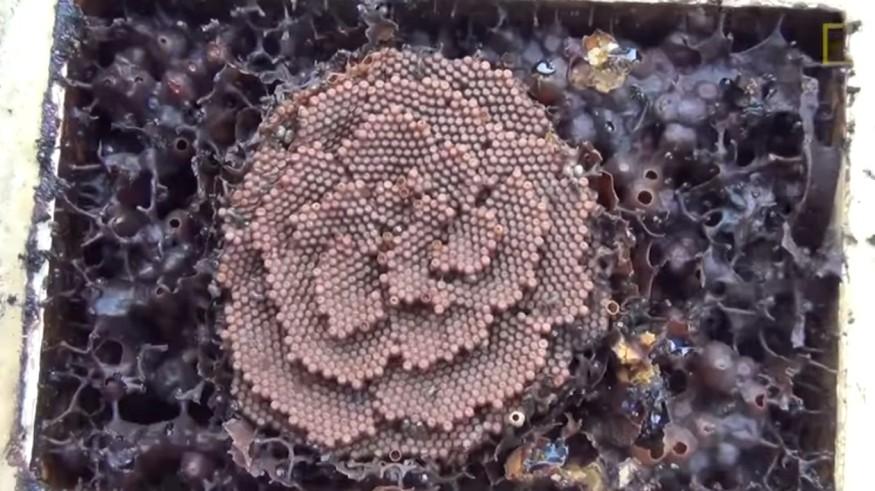The Hagia Sophia in Turkey, the Taj Mahal in India, Dancing House in the Czech Republic, and the Pyramids of Giza are examples of how humans turned the building of spaces into an art form. Indeed, these architectures look amazing.
However, humans are not the only creatures with such dazzling achievements. One particular genus of Southeast and Australian stingless bees has taken the building of spaces onto another level. They can create spiral beehives that can rival the Guggenheim in New York.

Stingless bees make a spiral, bullseye, and irregularly-shaped beehives
Bees are known to be smart, but it is still a mystery how Tetragonula bees could create their intricate spiral, bullseye, and other irregularly-shaped beehives.
An international team of researchers has volunteered to answer this mystery. Astonishingly, when they were investigating the matter using mathematical models, they found that the hive creation of the beehives' patterns has striking similarities in the formation of crystals.
According to the researchers, "crystal growth and bee comb construction are two systems operating within very different spheres of science. So what leads to the similar structures? This is the beauty of the applicability of mathematics to nature."
Often, similar laws and principles govern the formation of very different systems in various branches or areas of science. That means that their pattern can be described using the same mathematics.
The spiral beehives are not a flat surface, unlike the other commonly seen beehives. The layers of the spiral beehives are raised to allow bees into the terraces underneath. The researchers said that this structure could be thought of like a bee version of New York's Guggenheim Museum with its spiraling levels. The museum is a 20th-century structure known as one of the most architecturally important buildings in New York.
Universidad de Granada interdisciplinary physicist Julyan Cartwright, one of the researchers in the study, said that he got hooked on the spiral beehives' pattern after his co-researcher Antonio Osuna showed him some pictures.
He told Science Alert that they could take ideas they developed from looking at the formation of crystals and how mollusks make nacre or the mother of pearl. Both of them have shown a very similar spiral and target patterns to the spiral beehives.
Similar patterns with the formation of crystals
The researchers used some parameters to model the shape of the honeycomb. First is the R-value, which means that the different patterns were formed depending on the radius of one layer of the beehive. Then the α, which provides the random probability distribution of the pattern.
In crystal formation, α is caused by the impurities, while in honeycomb, it determines how flat the bees can make a layer.
The researchers said that the bigger the R-value, the bigger each layer would also be, either it is the bullseye or spiral pattern, and with fewer layers overall. While the bigger the α means the more disordered the terraces will be.
However, understanding this model does not necessarily explain why these stingless bees make such incredible patterns. The team believes that the bees are only using "local information" in building these structures, unlike humans who consider global information or considering the whole structure first before making a pan of the building.
The researchers published their study in the Journal of the Royal Society Interface.
© 2025 ScienceTimes.com All rights reserved. Do not reproduce without permission. The window to the world of Science Times.












